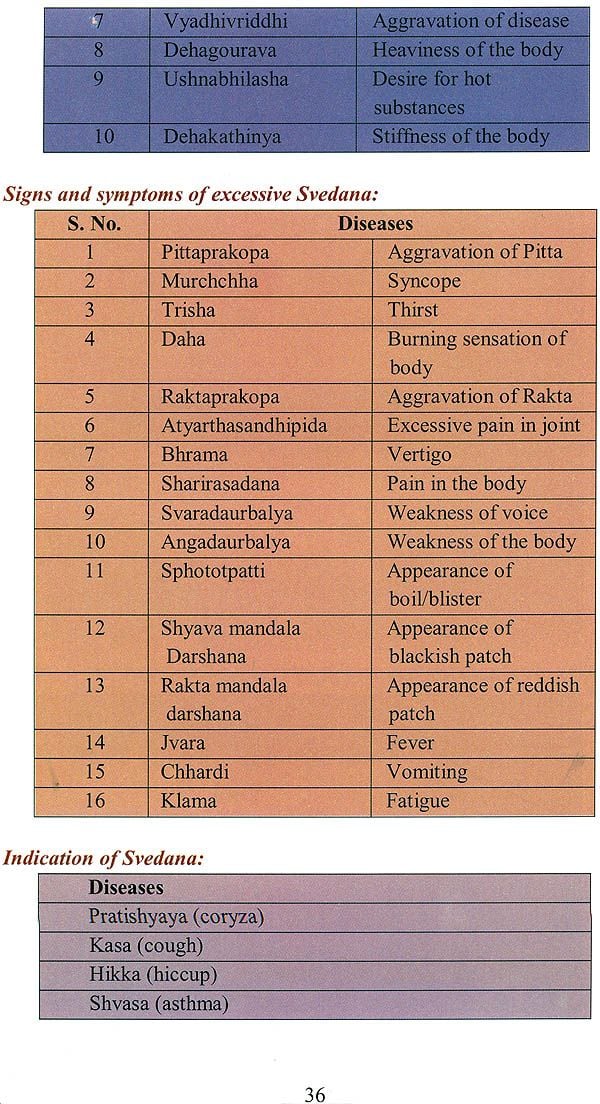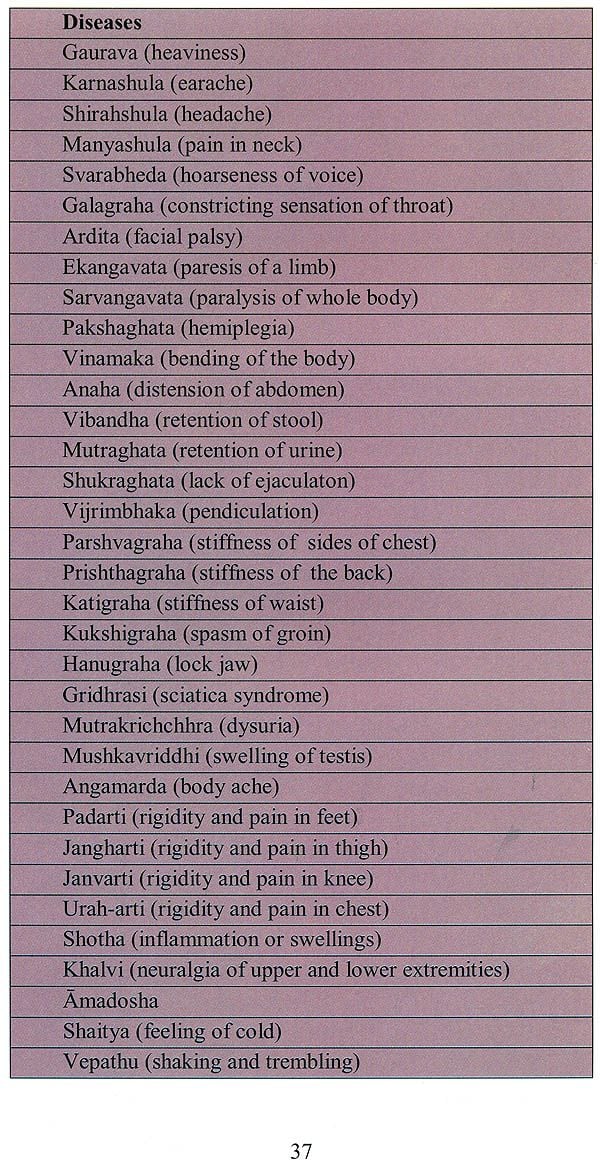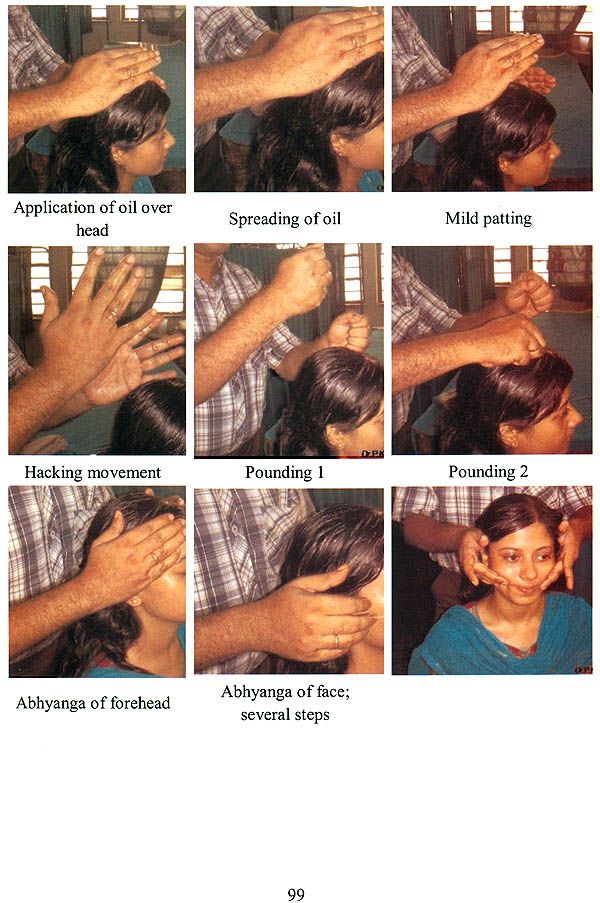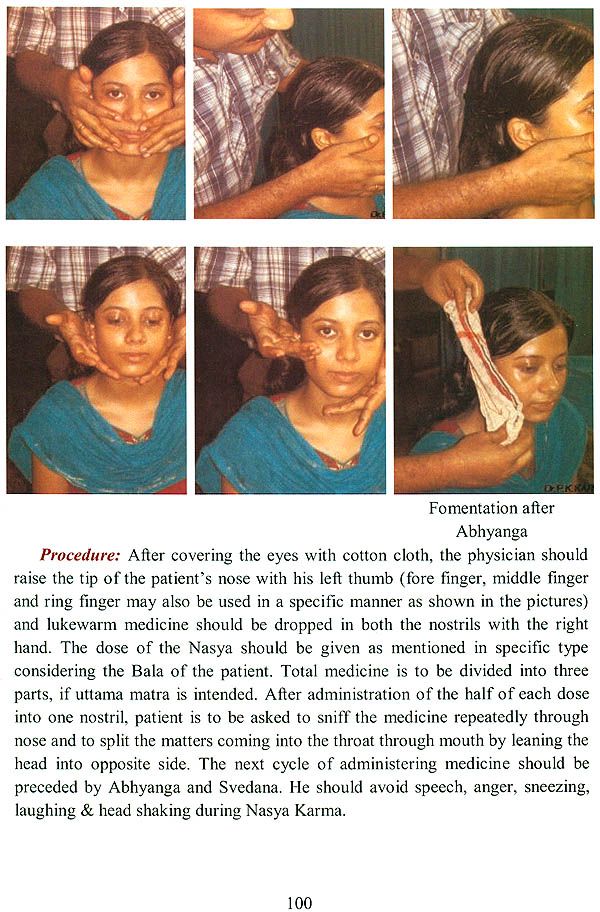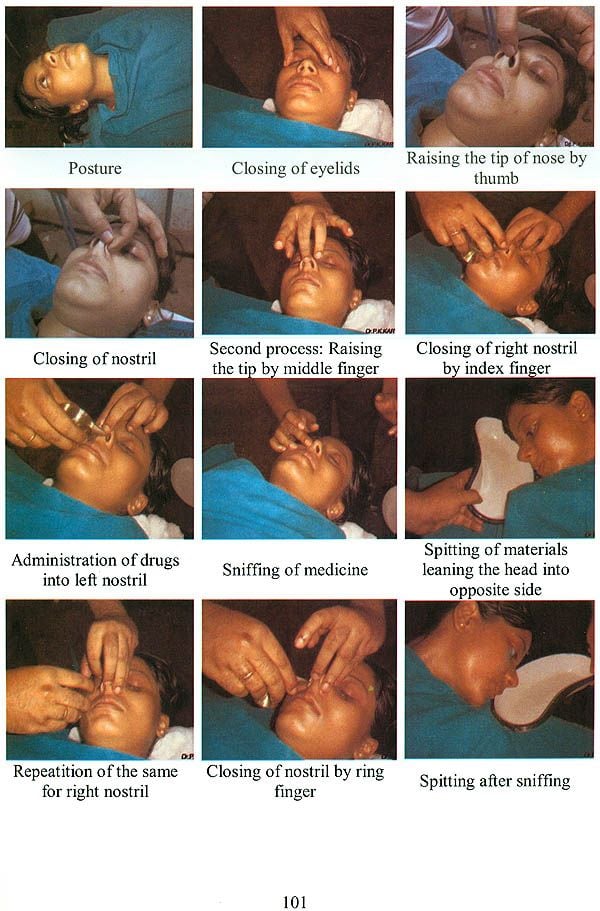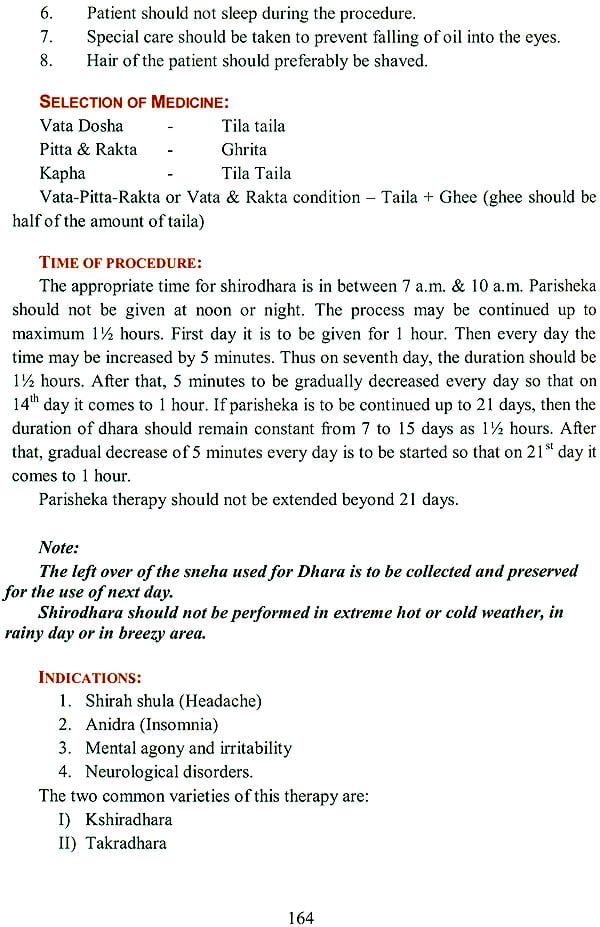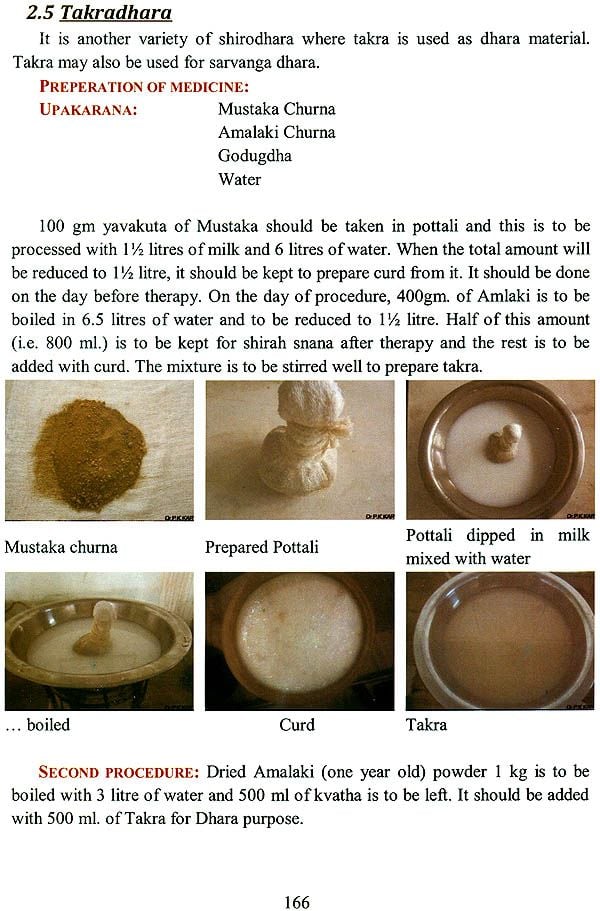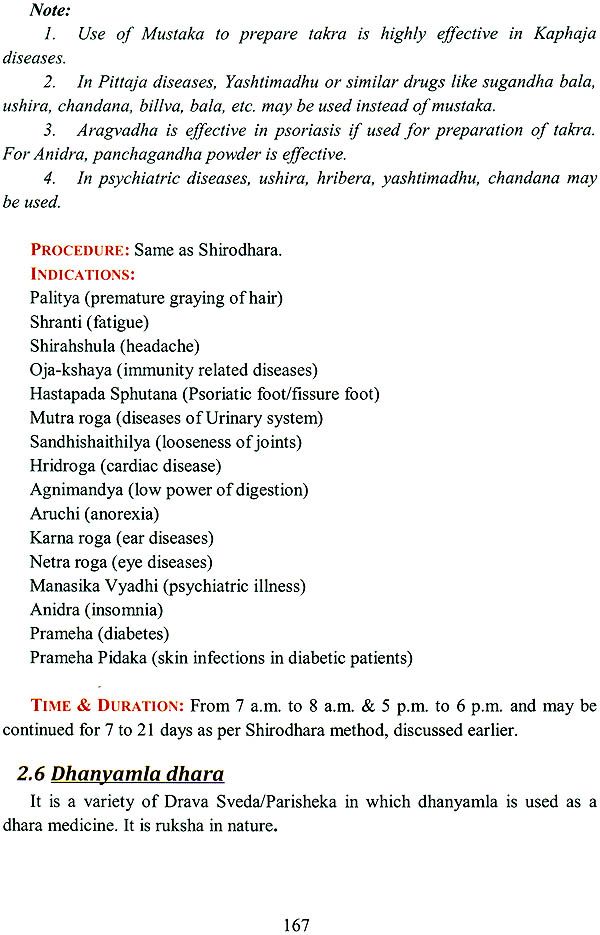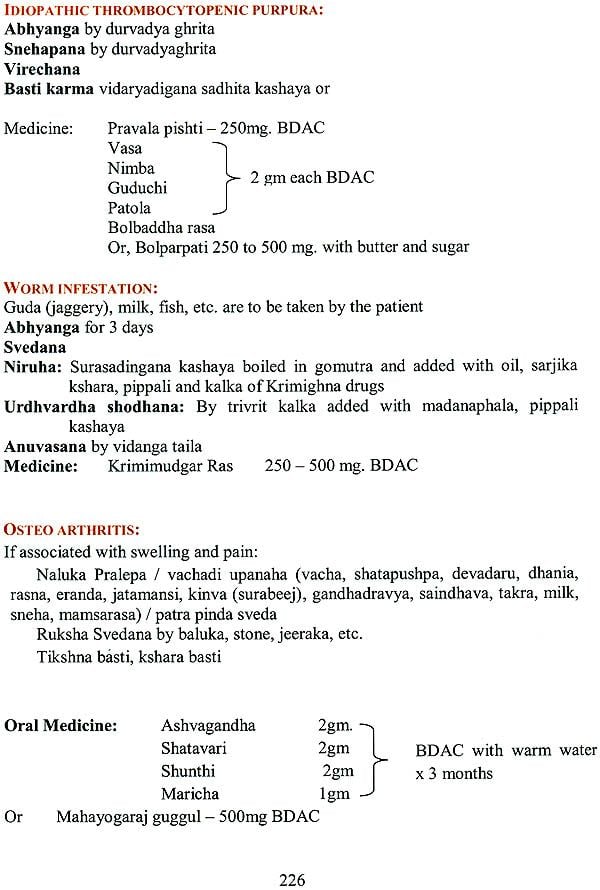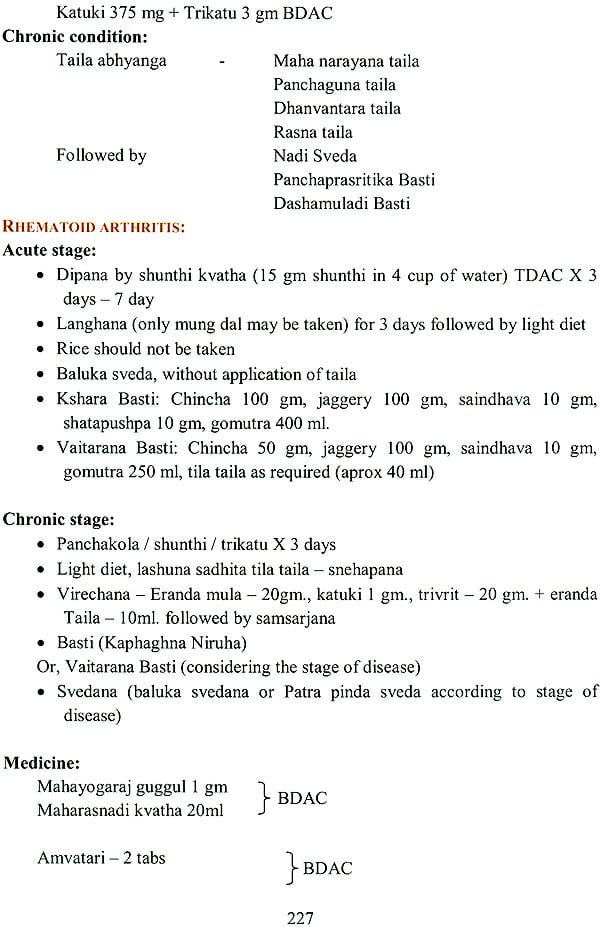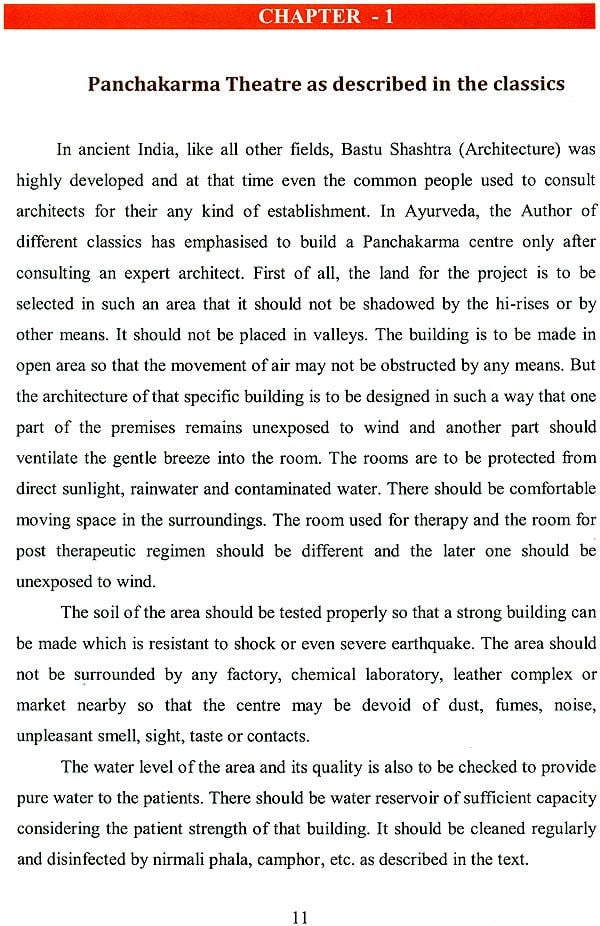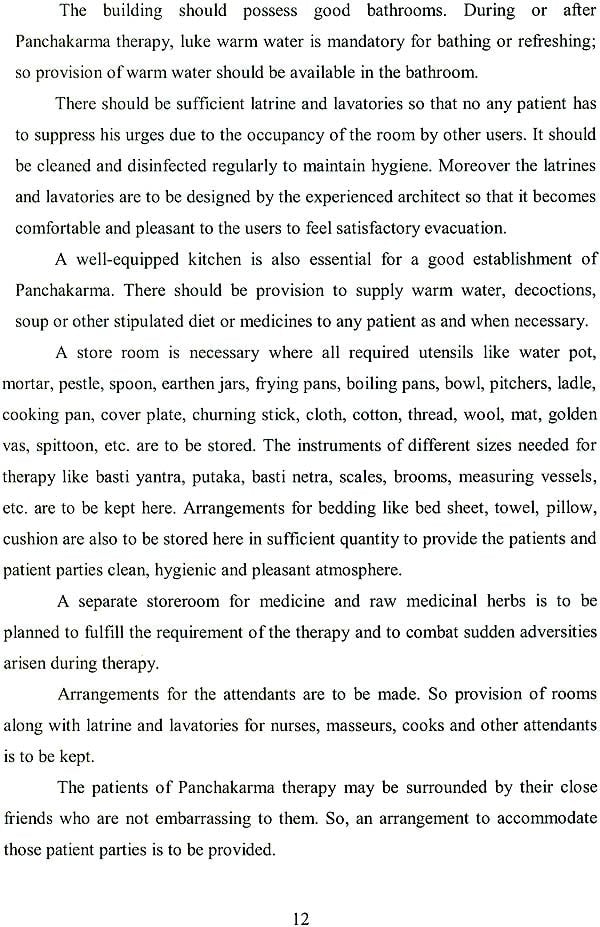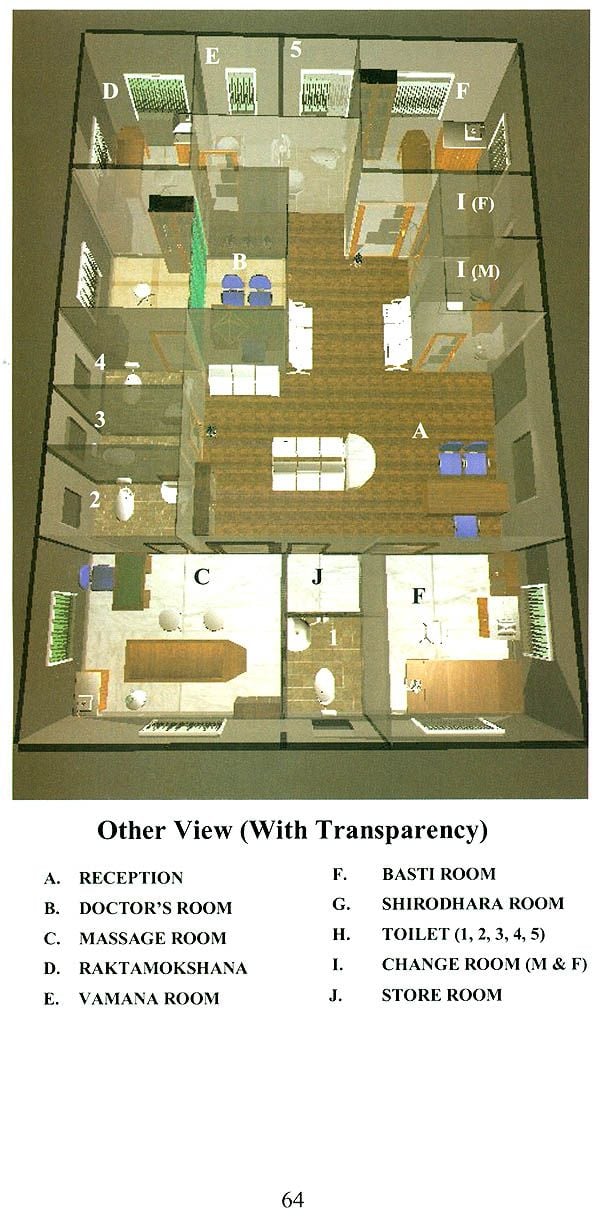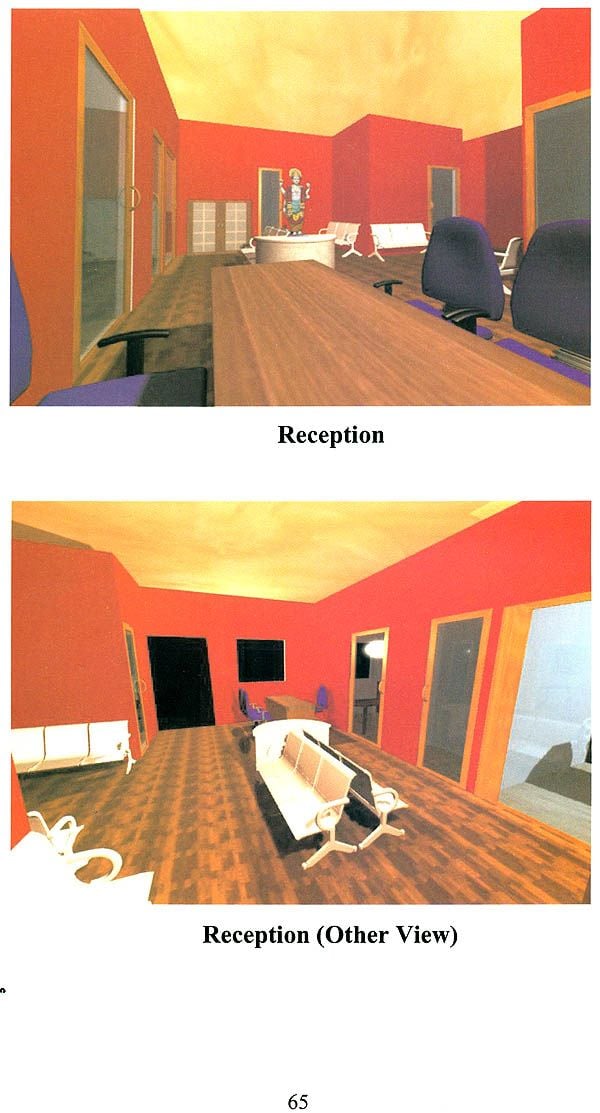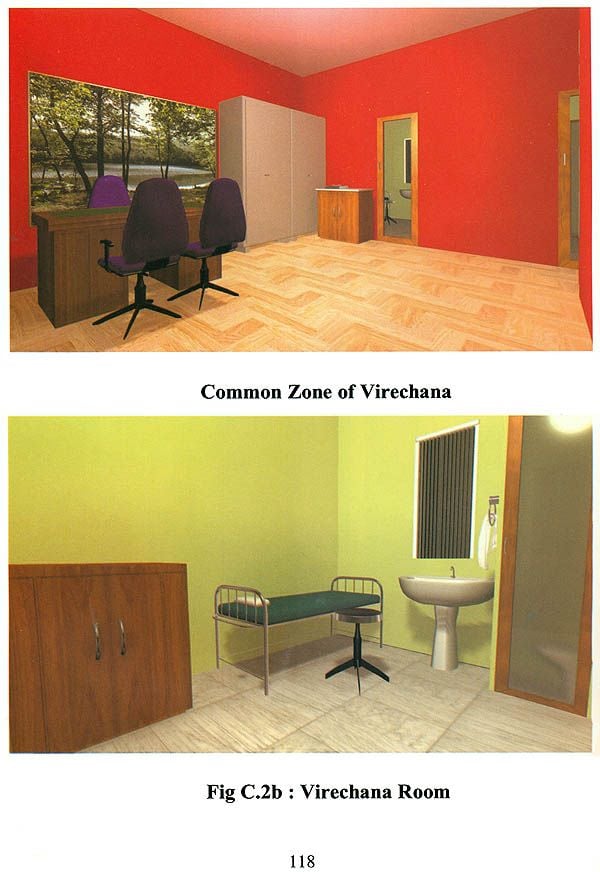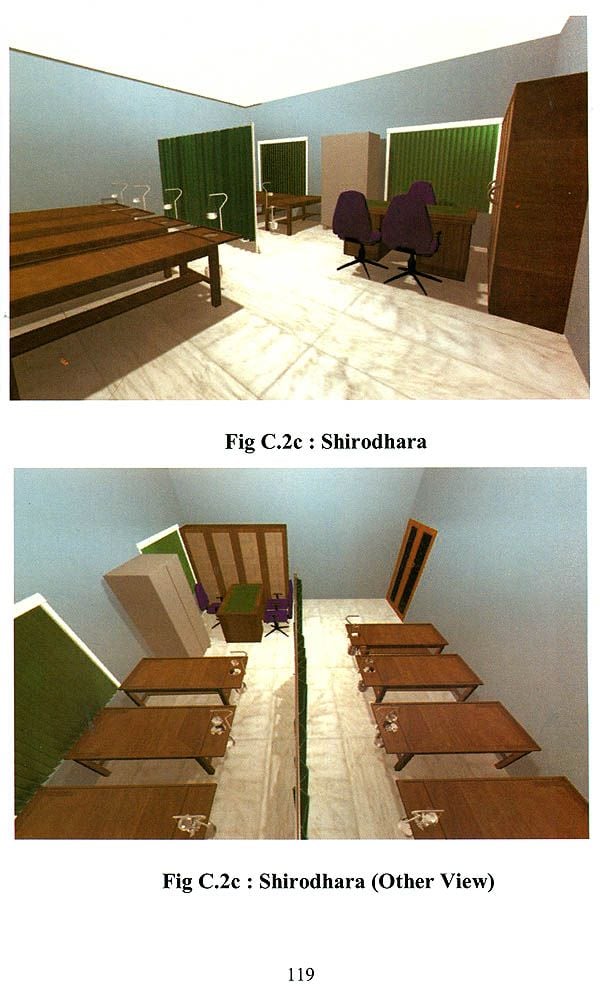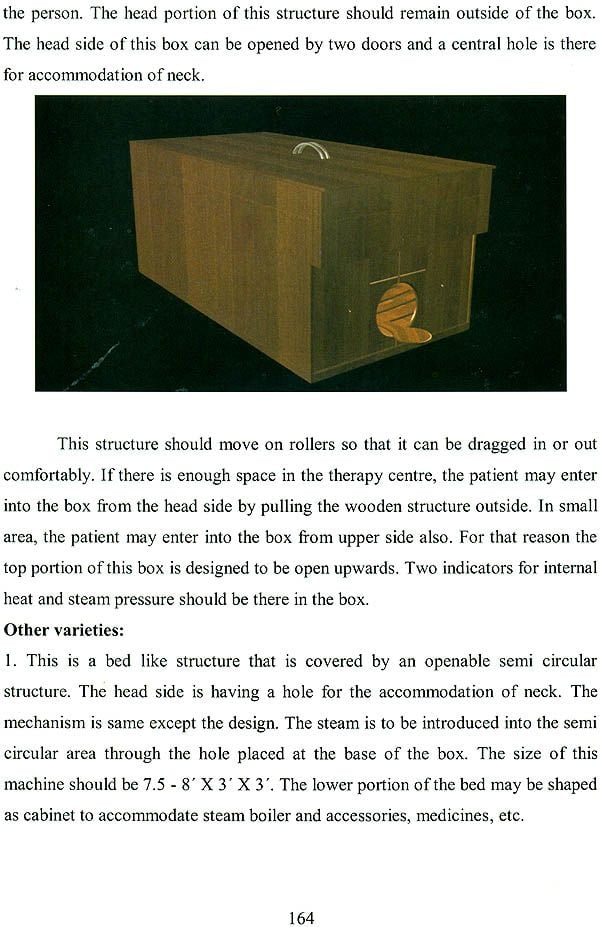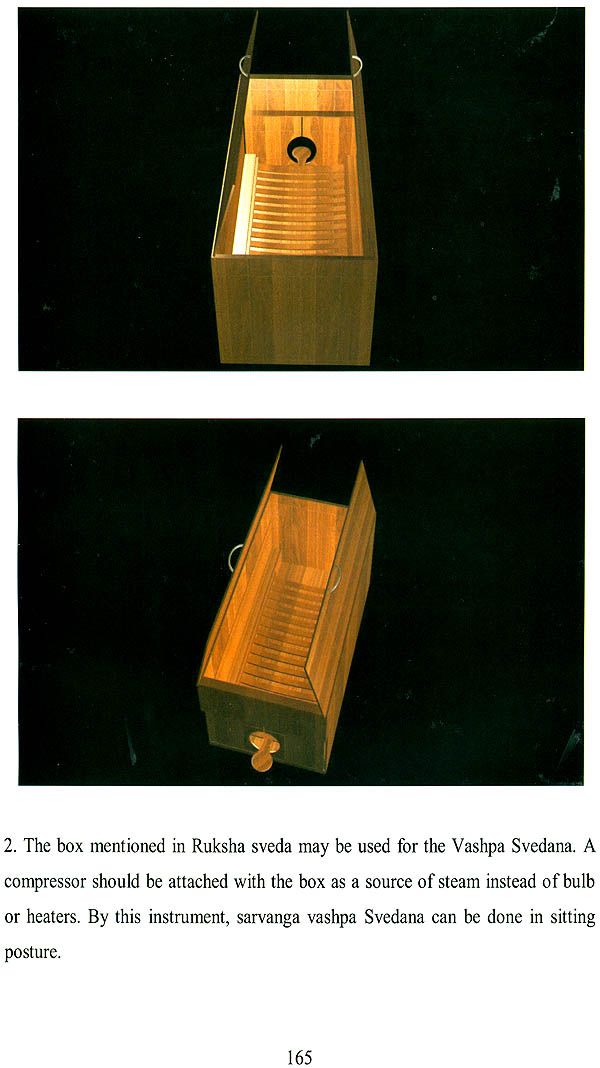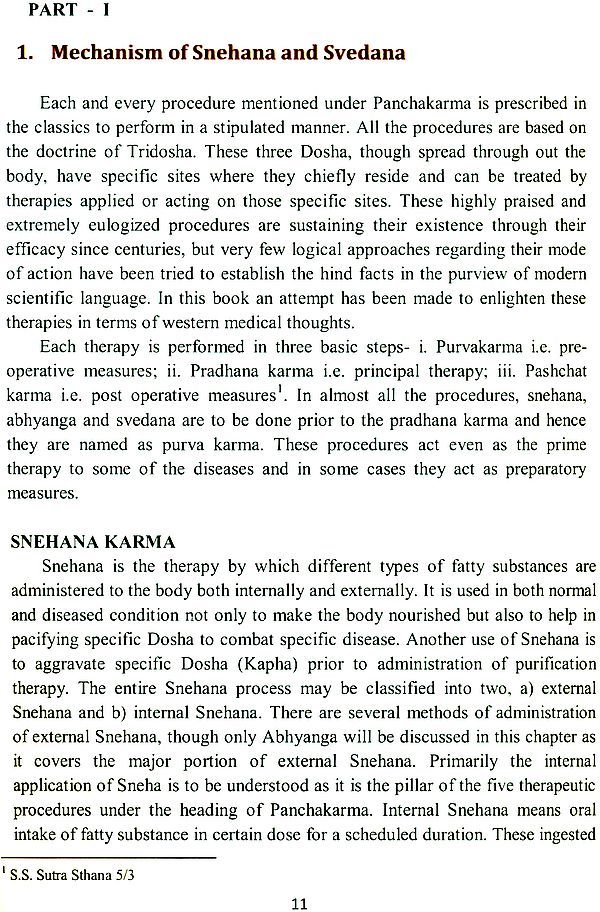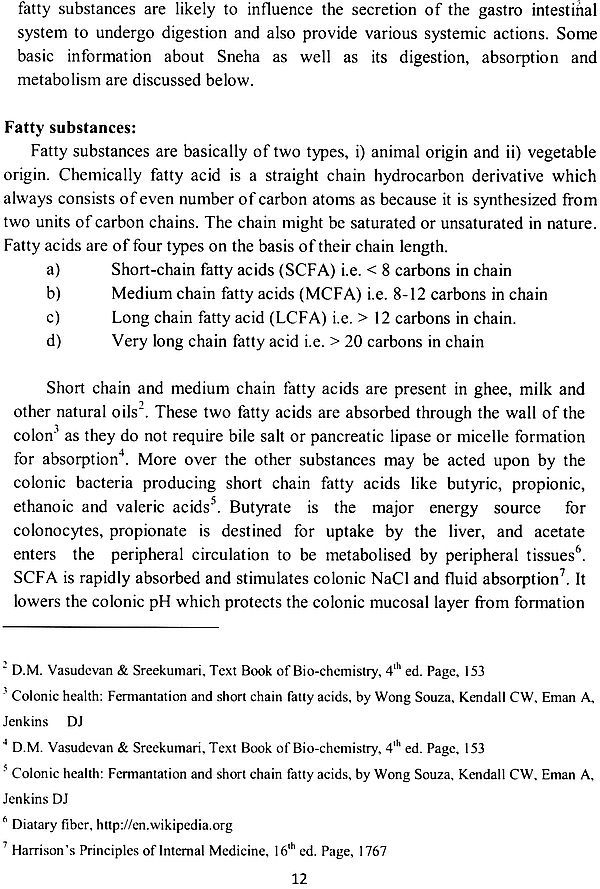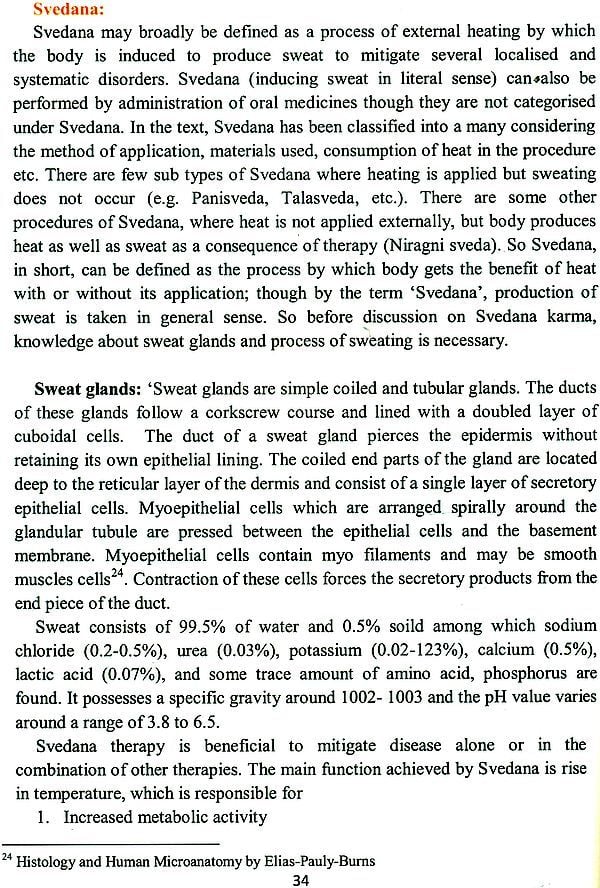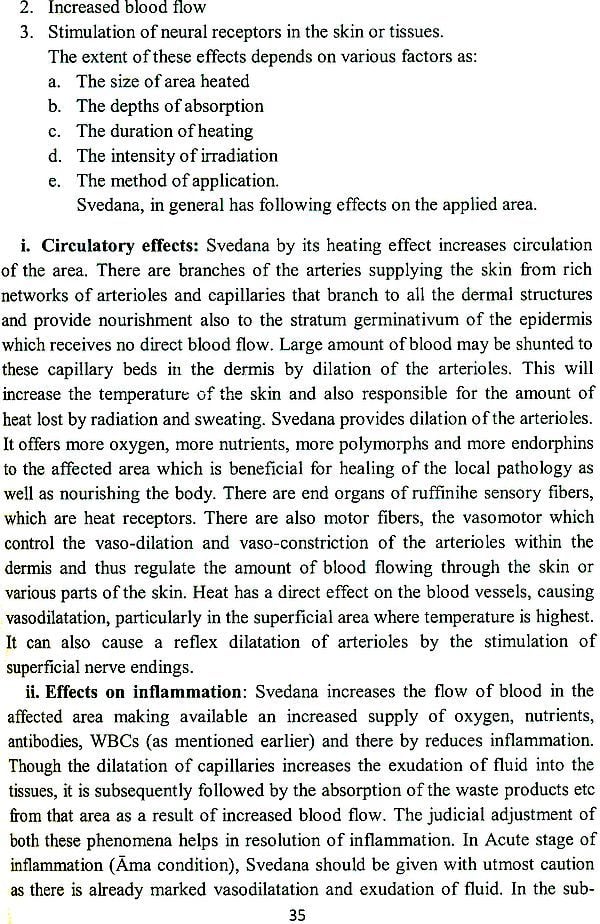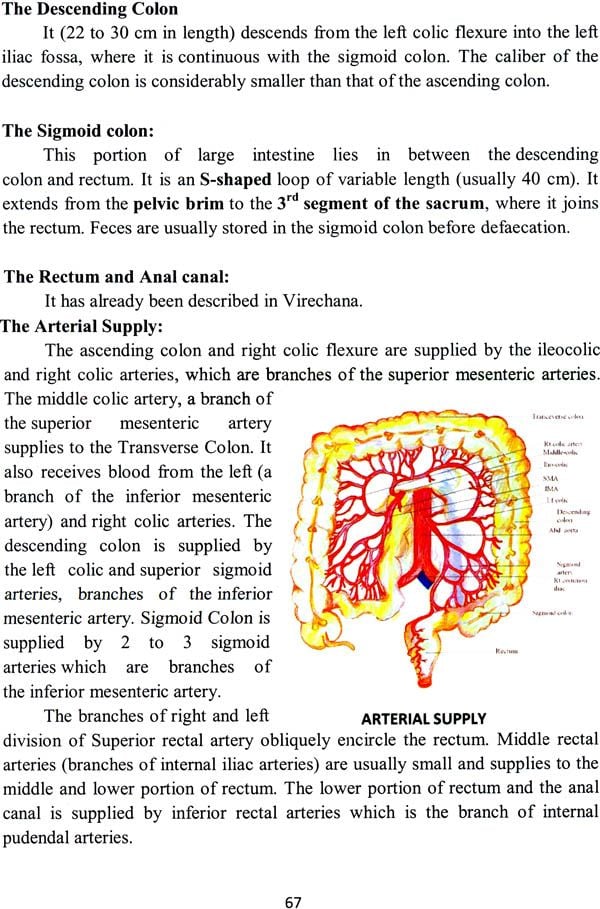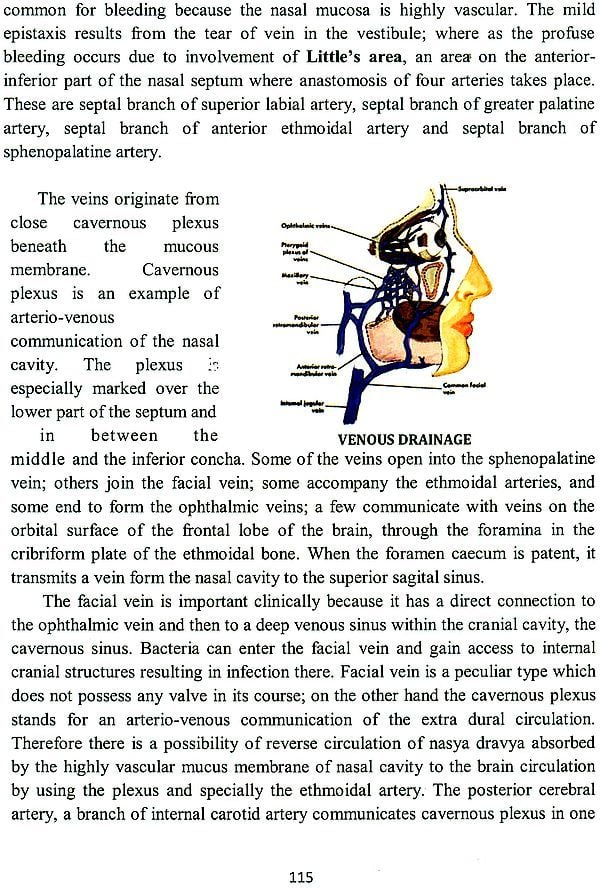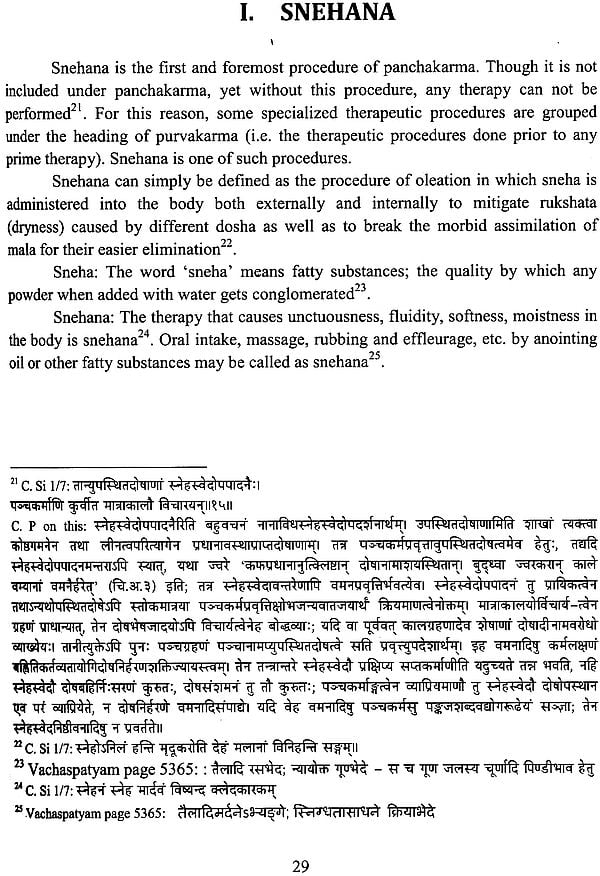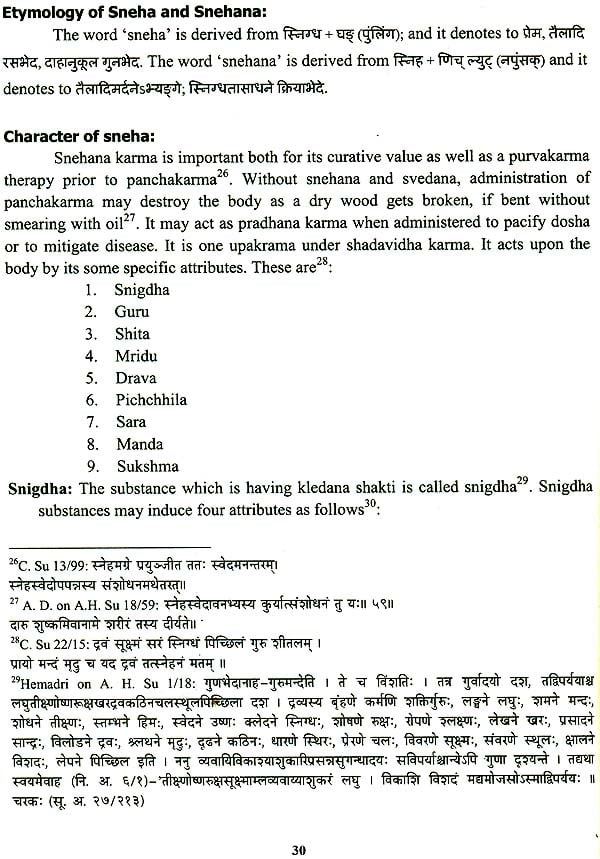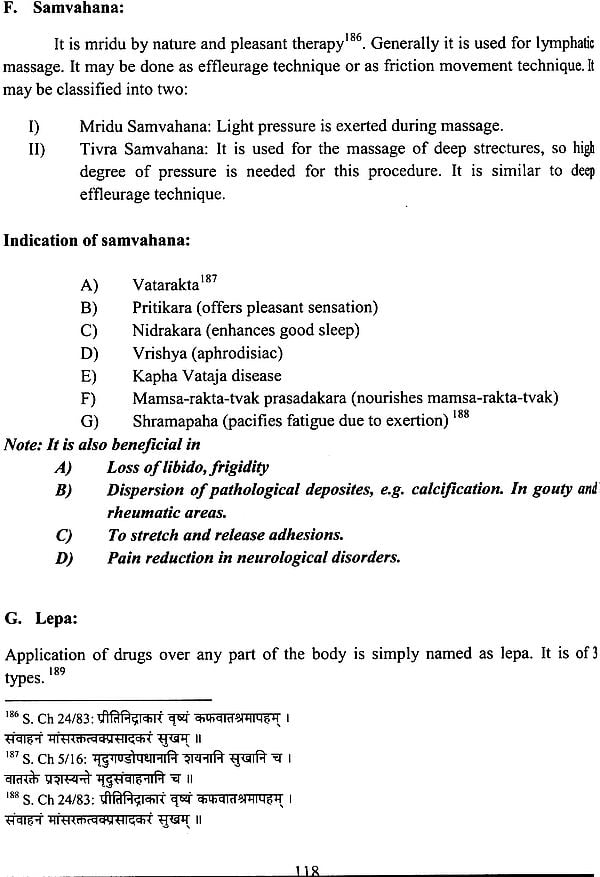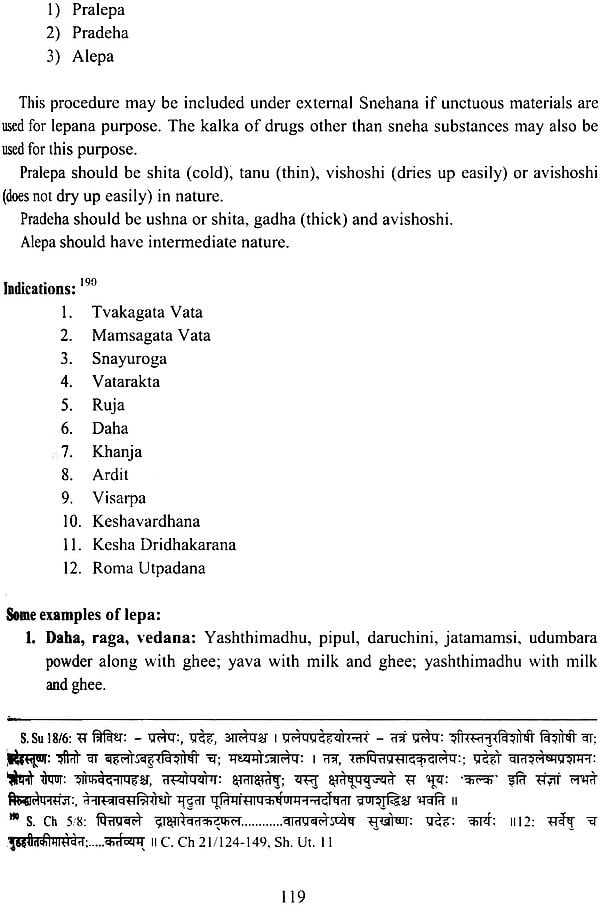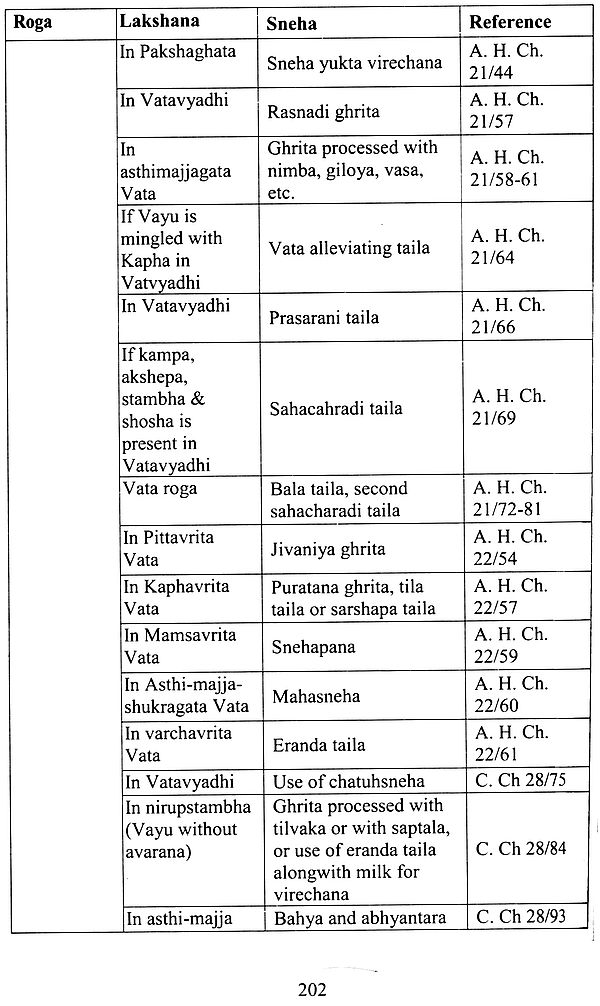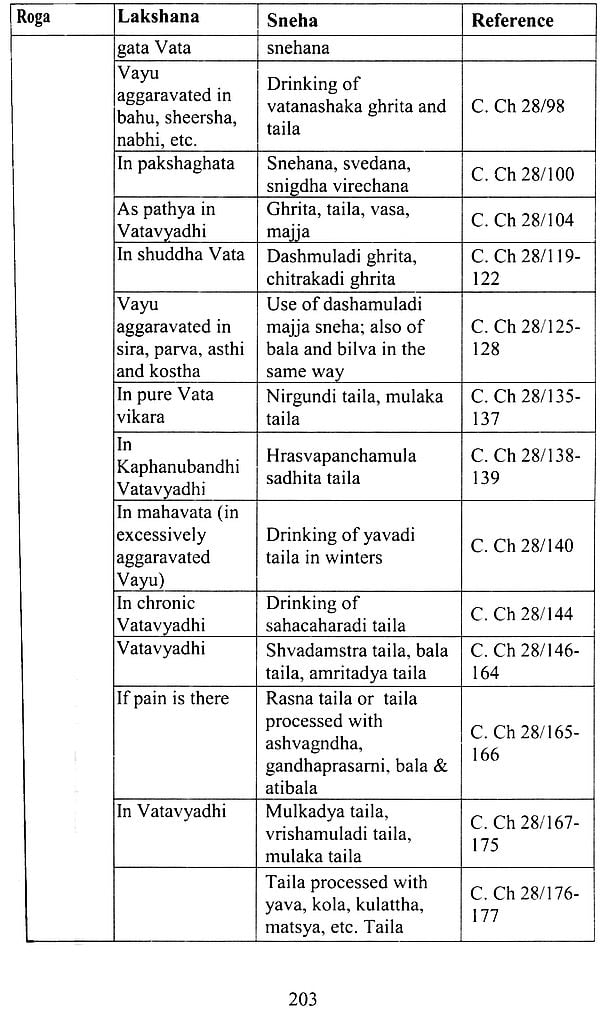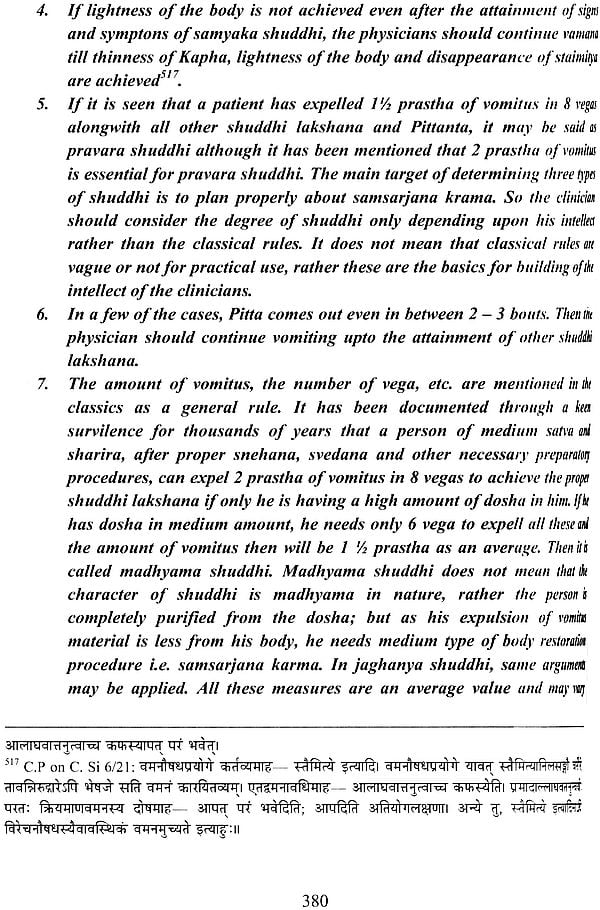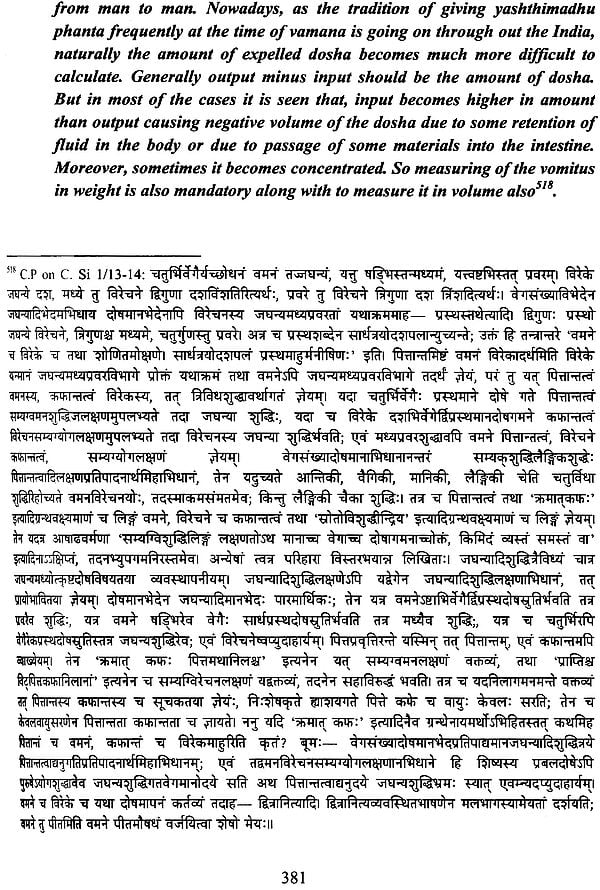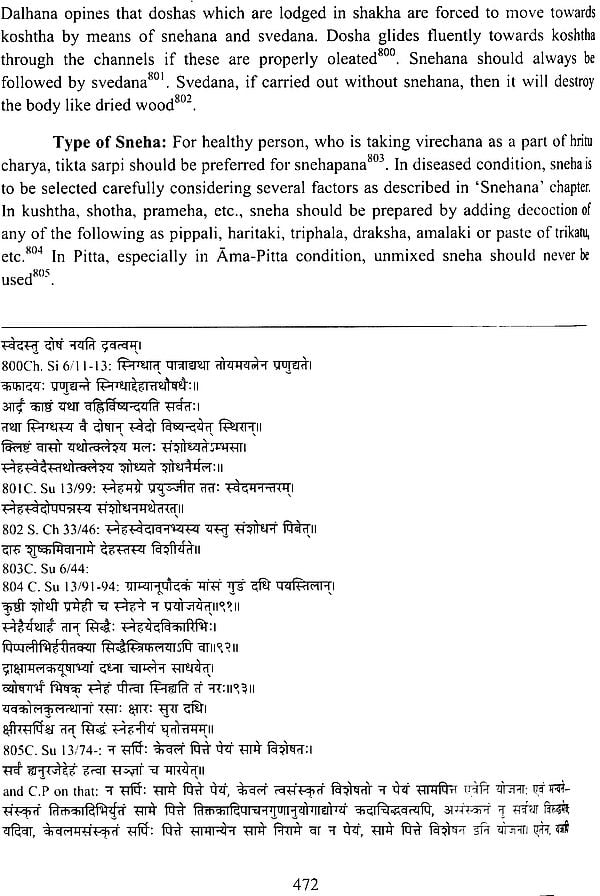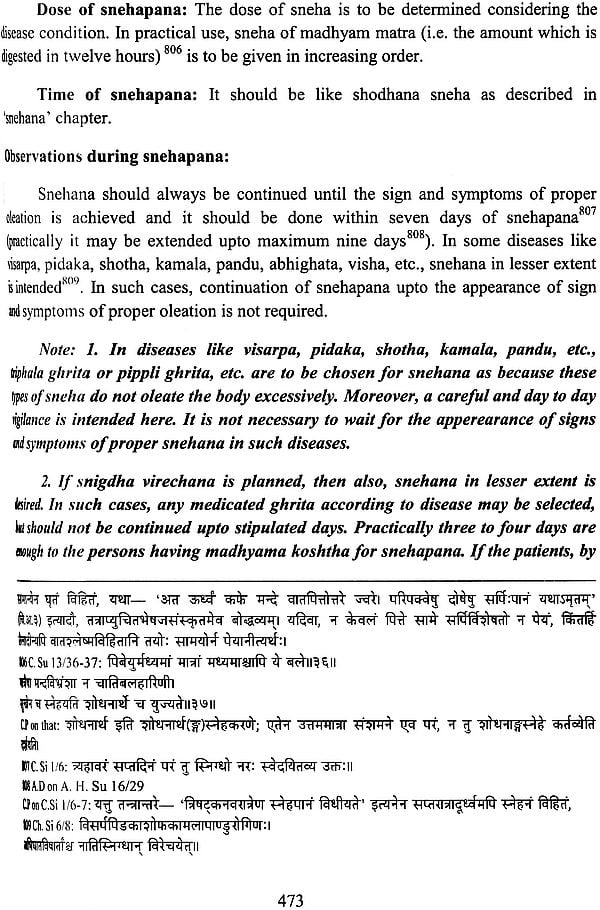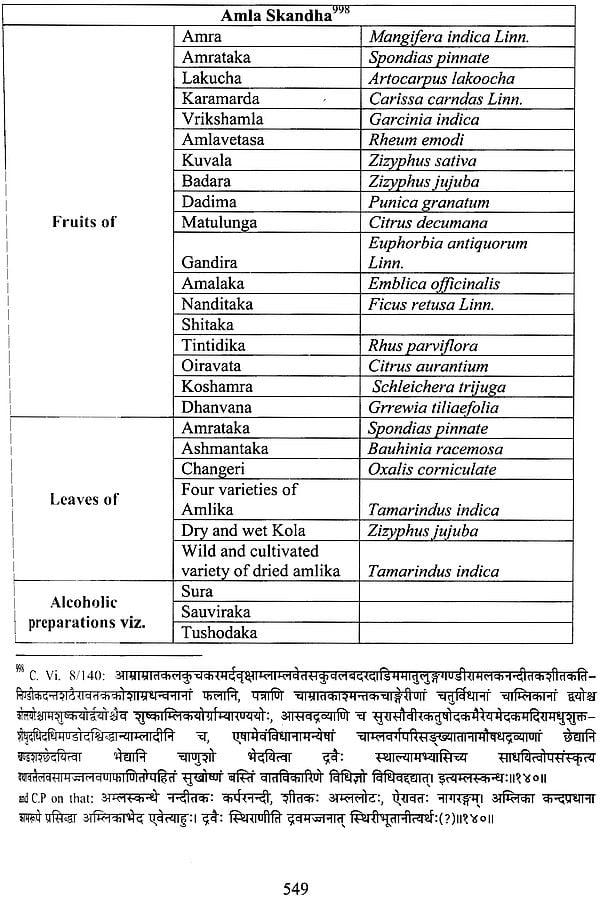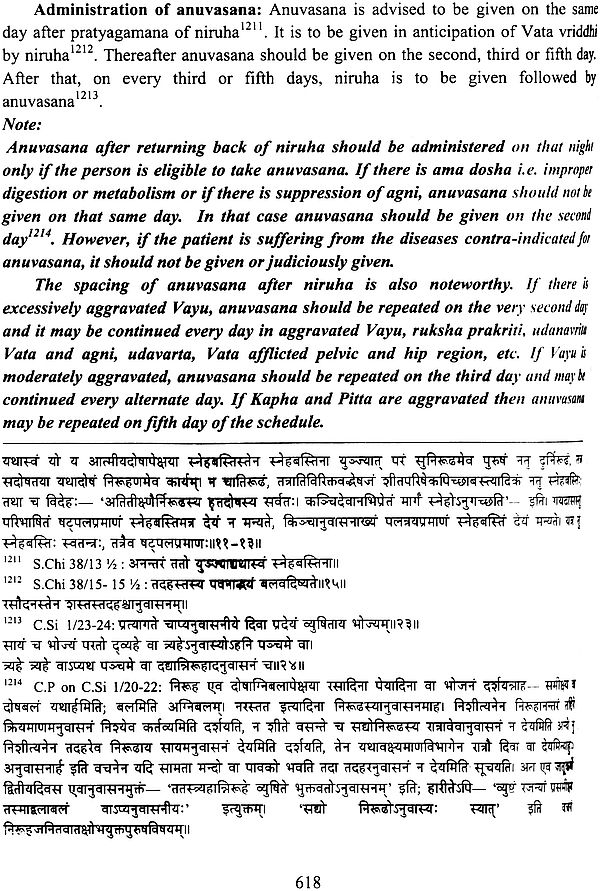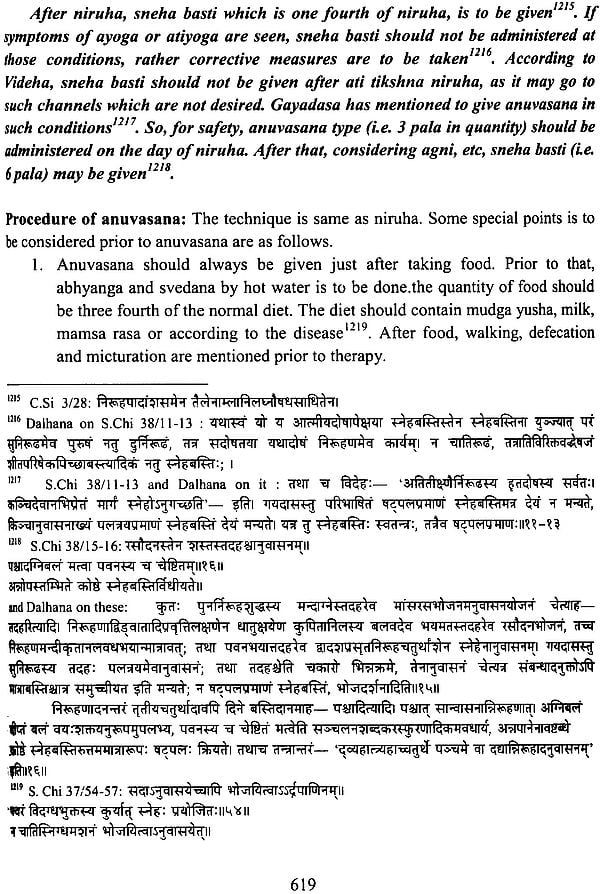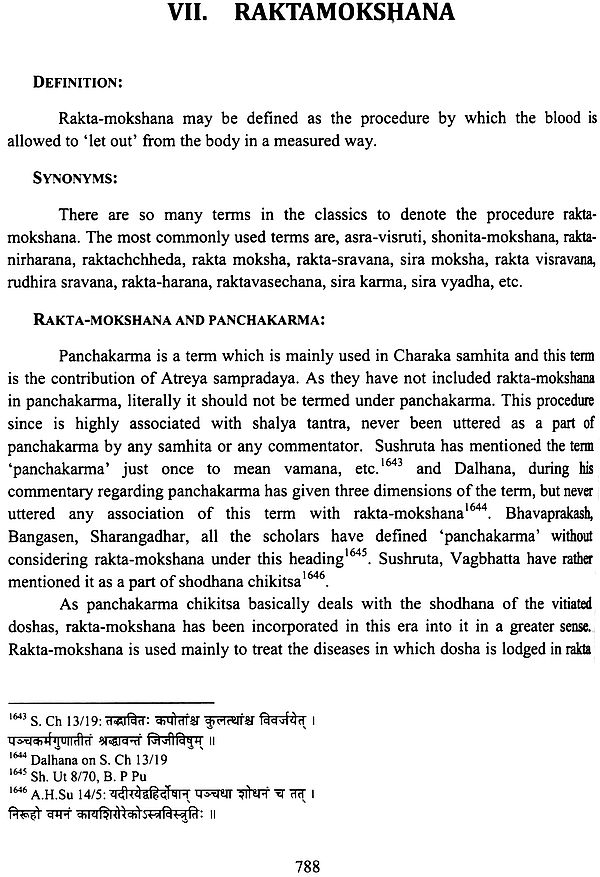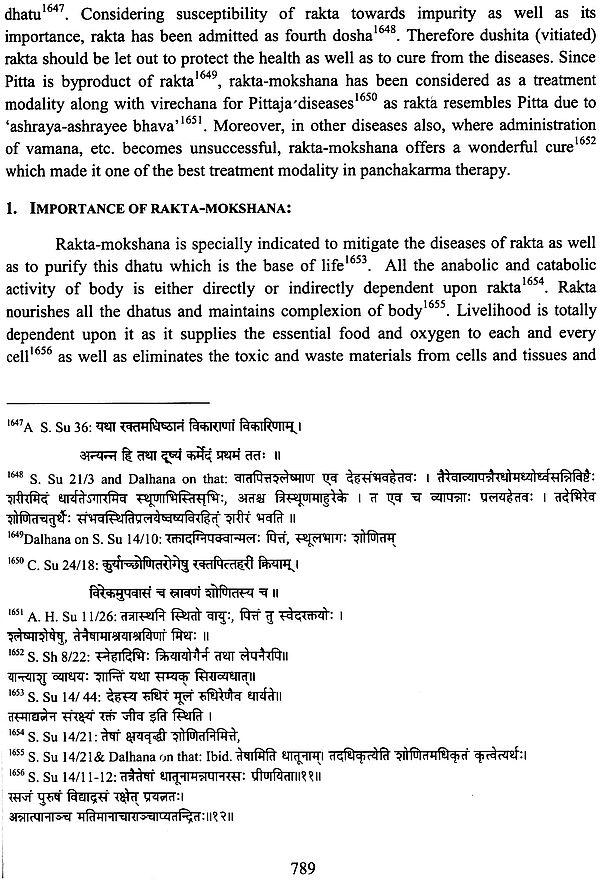
Panchakarma: The Most Comprehensive Resorurce Ever Published (Set of 4 Volumes)
Book Specification
| Item Code: | NAF332 |
| Author: | Dr.Pulak Kanti Kar |
| Publisher: | Chaukhamba Sanskrit Pratishthan |
| Language: | English |
| Edition: | 2013 |
| Pages: | 1445 (Throughout Color and B/W Illustrations) |
| Cover: | Hardcover |
| Other Details | 9.5 inch X 5.5 inch |
| Weight | 3 kg |
Book Description
Comprehensive view of Panchkarma has been presented in this book with sequential illustrations. The pure connotation of Panchakarma has been magnified here in its applied form. The brief documentation will definitely enrich the out -come of Panchakarma in a qualiltative shape. The requisite therapy for the diagnosed disease in allopathic system is also tuned here with generalized therapeutic modules for the ready reference of the Ayurvedic practitioners. Few photographs of the patients before and after Panchakarma therapy are also added to encourage the concerned students ad physicians to incorporate this noble therapy into their daily practice. Moreover a short profile of Panchakarma has been annexed in this book to maintain the procedure and records in an arranged shape. This book will be immensely helpful to the Ayurvedic practitioners who are not well acquainted with Panchakarma but want to perform it in a rational way.
Dr. Pulak Kanti Kar did his graduation of Calcutta, Post graduation in Panchakarma from Gujarat Ayurved University and Ph. D from Rajasthan Ayurved University. He has successfully performed thousands of Panchakarma in different critical diseases. He has written six valuable books on different aspects of Panchakarma. His approach and motivation to propagate Panchakarma has inclined several students and practitioners of Ayurveda to perform this therapy in clinical practice.
The diseases are classified in different ways. The treatment schedule of these classified diseases is specifically divided into pacifying measures and purificatory measures. The diseases which are not cured by the administration of pacifying measures require purificatouy therapy which prevents and cures the diseases meticulously; or both the measures are-performed to arrest the deep seated complicated diseases. Panchakarma is a classical and vast therapeutic procedure and the complete knowledge of each therapy incorporated under Panchakarma is very difficult to perform without the guidance of the qualitative and experienced teacher having sound practice. The pure form of Panchakarma or all the therapies is to be practiced in such a way that in any circumstances respective therapeutics of Panchakarma may be administered with confidence; but prior to that, the pure form of Panchakarma is to be understood categorically to follow the applied form. The institutional knowledge helps the students to mature definitely, but the common application of Pachakarma is easily understood if an individual makes his mind to incline into the practice of Panchakarma. Therapeutically the Panchakarma is broadly explained but in a nut shell it can be studied and practiced with an innovative out look. The broad sense of Panchakarma is confined in this book in such a way so that all the beginners can have an idea with the preliminary experienced knowledge transmitted trough practice. The quantum of diseases is rapidly progressing and the ancient nomenclatures of diseases are to be examined in the modern perspective and the ultimate analysis is to be put with a classical amplification. The diseases in the modern era, apparently identical to that of the ancient nomenclature of the diseases on the basis of subjective parameters, may be encountered with positive coordination of respective purificatory therapeutics as mentioned in the compendium. In this book, the classical concept of Panchakarma is presented with its applied in relation to modern nomenclature of the diseases for the better understanding of the coming generation. The relevancy of modern parameters in clinical practice of panckarma and easily understandable assessment criteria in respect to specific therapy have been annexed in this book. The intension of writing this book will radically explore the momentum of the clinical orientation of Panchakarma.
Same drug act in different ways based on the route of administration. Different routes as nasal roeute, oral route, vaginal route, urethral route and rectal route are used for the administration of the drugs in Panchakarma. Action of drug is well described in the different compendium and the clinical efficacy of Panchakarma is well explained and practiced thoroughly, but the mechanism of the action of Ayurvedic drug is till unexplored in modern perspective. The mechanism of action of therapy as mentioned in Samhita is scientific if analysed in modern purview considering the Physiology, Anatomy, bio-chemistry etc. An attempt has been made in this book to establish the hypothetical mode of action of the therapy in Panchakarma for better understanding with scientific entity keeping the principle intact. This book will be beneficial for the students, teachers and professional who are always keen to know the hidden truth of Panchakarma.
Dr. Pulak Kanti Kar did his graduation from University of Calcutta, Post graduation in Panchakarma from Gujarat Ayureved University and Ph. D from Rahasthan Ayureved University. He has successfully performed thousands of Panchakarma in different critical diseases. He has written six valuable books on different aspects of Panchakarma. His approach & motivation to propagate Panchakarma has inclined several students & practitioners of Ayurveda to perform this therapy in clinical practice.
Panchakarma is an effective measure to encounter the disease as well as to eliminate the morbid materials from the body to maintain an healthy state. The therapeutic approach is always scheduled on the basis of pharmacodynamics and pharmacokinetics and the absolute procedures of the administration of the respective therapy lead to achieve the ultimate goal. The primary action of the drug is supported by the action of the cellular activity. Different routes are used for the administration of the drugs and the same drug acts in different ways based on the route of administration. The drugs are generally administered through oral, parenteral, nasal or rectal routes, etc. In the ancient time, nasal route oral route and rectal route were the prime routes for the administration of drugs.
The cumulative cultivation of the knowledge of Panchakarama is though rationally accepted in respect to its therapeutic effect in empirical thoughts, but the modulation of the therapy has not yet been established in the purview of western science. The mechanism of action of therapy as mentioned in Samhita is scientific if analyzed in modern purview considering the physiology of vomiting reflex, defaecation reflex, ets. The hypothetical mode of action of the drug for Panchakarma is explained in this book for the better understanding with scientific entity keeping the principle intact.
How to establish a Panchakarma centre’ is a frequently asked question, at least once by the junior Ayurvedic practitioners who have little money, small space but a sky limit hoe. This book may bring them ambrosia of confidence that they can do it even in their available space. In this book, therapies suitable for OPD level, small and clinic and moderate to large set up are illustrated with appropriate architecture. The utensils and instruments, which were used in ancient period, are mentioned here along with their modulated form which can be used in the sophisticated set up. List of medicines to be stored in the Panchakarma hospital as well as in the small set up is also mentioned in this book for ready reference. This is the easiest guide to be gone through even before dreaming of a sophisticated establishment of Pnachakarma.
Dr. Pulak Kanti did his graduation from University of Calcutta, Post graduation in Panchakarma form Gujarat Ayurveda University and Ph. d from Rajasthan Ayurved University. He has successfully performed thousands of Panchakarma in different critical diseases. He has written six valuables books on different aspect of Pnachakarma. His approach & motivation to propagate Pnachakarma has inclined several students & practitioners of Ayurveda to perform this therapy in clinical practice.
Panchakarma, the unique and wonderful treatment modality of Ayurveda is basically designed for the elite class of the society like king, merchant or somebody having similar status. It does not mean that people of lower or lower middle socio- economic group are not entitled to undergo through Panchakarma. Actually the disease that requires elimination therapy dies not attack people considering their socio- economic status. These people should also be treated by Pnachkarma but with utmost consideration and temperance, as it is really very expensive therapy. Gradual downfall of this miraculous therapy in last thousand years possesses many aspects behind it, but expense of the therapy along with lacuna of interest of the Ayurvedic Physicians to setup a complete and comprehensive Panchakarma centre are the prime reasons. The scenario has nowadays been changed completely. The average upliftment of the socioeconomic status of common people along with their health consciousness has pused hi-tide of Panchakarma in the ocean of medical and cosmetic field. More over it has now been accepted globally. In each and every country, the common people are becoming well acquainted with spas and massage parlous, where steam bath, hot-bath, anointment of herbs, etc. are done which are the basic and fundamental procedures of Panchakarma. The owner of those spas and parlours are to be motivated to use the same establishment for therapeutic purpose by simply appointing a Panchakarma physician. It is also a challenge for the Ayurvedic physicians to propagate and to practice Panchakarma in every aspect to explore its hidden fragrance not only to the elite society but also to the common mass in a very cost effective measure. The physicians should have to adopt modulations on Panchakarna made by many scholars to practice it in a rational way. This therapy has many fragments to be used in different circumstances and perspectives. The physicians, who have little space for clinic but interested to practice Panchakarma. Should perform few therapies in his own clinic in OPD basis. It will help him earn more money as well as fame. The physicians, who have more space, may design cabins to perform Pnachakarma accordingly. The ayurvedic doctors as well as non-medico landowner may also be interested to establish a full- fledged Panchakarma hospital where all types of facility related to Panchakarma would be available. In this book, therapies suitable for OPD level, small clinic and moderate to large setup are illustrated with appropriate architecture. Different designs of Panchakarma setups along with their cross sectional views are given. The interested concerns may adopt these basic structures with some innovative addition alteration according to their available space and requirements. The utensils and instruments, which were used in ancient period, are mentioned here along with their modulated form which can be used in the sophisticated setup. List of medicines to be stored in the Panchakarma hospital as well as in the small setup is also mentioned here for ready references.
This book neither is written to teach how to perform Panchakarma or its indication, contra- indication, its adversities, etc. nor to describe to mode of operations of various therapeutic instruments. This book is written for those individuals who know the Ayurveda as well as Panchakarma judiciously.
The aim of this book is to encourage all the Ayurveduc physicians as well as students to incorporate Panchakarma in daily practice. Just pick up a design for your dream establishment as per your need and start. List of suitable instruments are given. Collect them and place them accordingly for easier practice of Panchakarma.
To you reader, who are till in agony regarding shortage of money or space: Don’t worry. Settle your mind, relaaaax and start your practice. This small setup will definitely give you fame and money by which you may establish a big Panchakarma hospital to pipette the sorrows of sufferings. Best of Luck.
The theoretical part of Panchakarma has been explained in this book with an outstanding clinical approach. The procedures have been critically analyzed in the purview of the concept of Panchakarma depicted in the compendium supported by appropriate references. The subject is presented in such a way that Ayurvedic people can realise the matter with a ration vision and can perform the therapy in daily practice.
Dr. Pulak Kanti Kar did has graduation from University of Calcutta, Post graduation in Panchakarma from Gujarat Ayurved University and Ph. D from Rajasthan Ayurved University. He has successfully performed thousands of Panchakarma in different critical diseases. He has written six valuable books on different aspects of Panchakarma. His approach and motivation to propagate Panchakarma has inclined several students and practitioners of Ayurveda to perform this therapy in clinical practice.
The principle based theories if applied in the clinical practice and show their effectiveness to mitigate the diseases, then the theories are converted into applied procedure. The principle is formed through observation, re-observation, experimentation, hypothesis, re-experimentation and conclusion. These six steps are primarily documented in different ancient medical compendium and the vivid description of any therapeutic procedure is detailed with its applied form. All the theories are having some prerogative values because of experimental depiction.
Panchakarma is a fruitful measure and its extensive efficacy is classified in different dimension to cure different types of complicated diseases. Vamana, Virechana, Niruha, Anuvasana and Nasya are the five procedures and subsequently Vamana, Virechana, Basti, Nasya and Raktamokshana are also broadly termed as Panchakarma. The qualitative effect of Panchakarma is purely detailed in a cumulative perspective. The cultivated knowledge of Panchakarma is well transmitted in the way. of applied synchronized process. The inclination towards the practice of Panchakarma is very much' essential for the Ayurvedic doctors to achieve the goal. In day to day practice, the new diseases are evolving with intense gravity and therefore to combat those, Panchakarma is an effective measure. It is not essential that all the karmas are to be performed at a time or in a specific disease, but considering the involvement of the Dosha, dhatu and mala, severity of the disease and the constitution of the individual, the respective measure is advocated following the principles; as a result of which, the outcome is extra-ordinarily beneficial.
In the ancient time it was well practiced with confidence as the Ayurvedic physicians were well acquainted about those therapies and were experts to perform and confident to arrest the adversities well in advance. In due course of time, the practice of this therapy was in a dilemma because of the non acquaintance of the principles of those therapies. The experienced physicians performed these therapies not only by the empirical ways but also maintaining the scientific entities. The appropriate choice of drugs, schedules of dose, preparation of the medicines, requirements for respective diseases were methodically pre tuned and these classical therapies were magnified in different consequences of different diseases.
The micro level analysis of Panchakarma is till unexplored in spite of several research works made in different apex and local Ayurvedic institutions. The recent generation always tries to analyse the matter in the perspective of modern lights. The enriched science behind this therapy is nowhere enlightened. This leads to call for reanalysis of the justification and efficacy of Panchakdarma in new dimension keeping the principles intact. Propagation of knowledge of Panchakarma will definitely accelerate the logical thoughts and practice with regained potentiality of the Ayurvedic physicians.
In this book, with the advent urge of the students, the thorough principles if Panchakarma have been postulated with an elaborative purview in a sequenced manner. Rhythmical study of the portion of Panchakarma of different Ayurvedic compendium has been incorporated in this book to hasten the micro analysis of the systematized study.
| Part- I | 12 | |
| 1 | Purvakarma | 16 |
| 1.1 | Snehena | 16 |
| I. | Bahya Snehana: | 16 |
| a) | Abhyanga | 16 |
| b) | Mardana | 17 |
| c) | Unmardana | 17 |
| d) | Murdhva taila | 17 |
| e) | Shiro Abhyanga | 18 |
| f) | Shiro Sheka | 18 |
| g) | Shiro Pichu | 19 |
| h) | Shiro Basti | 19 |
| i) | Karnapurana | 20 |
| j) | Nasatarpana | 21 |
| k) | Akshitarpana | 21 |
| l) | Mastihkya: | 22 |
| m) | Snehavagahana | 23 |
| n) | Snehadhara | 23 |
| II. | Abhuantara Snehana | 23 |
| a) | Sarpi (Ghrita) | 23 |
| b) | Taila | 24 |
| c) | Vasa | 24 |
| d) | Majja | 24 |
| 1.2 | Svedana | 33 |
| 2 | Pradhana Karma | 40 |
| 2.1 | Vamana | 40 |
| 2.2 | Virechana | |
| 2.3 | Basti | 62 |
| I. | Niruha | 62 |
| II. | Sneha Basti | 81 |
| 2.4 | Nasya | 95 |
| I. | General Procedure | 98 |
| II. | Dhmapana | 104 |
| 2.5 | Raktamokshana | 115 |
| Part - II | 126 | |
| 1 | Some Special Svedana Procedures | 136 |
| 1.1 | Pinda Svesa | 136 |
| 1.2 | Shashtikashali Pinda Sveda | 136 |
| 1.3 | Annlepana: | 141 |
| 1.4 | Patra Pauttali Sveda | 145 |
| 1.5 | Jambira Pinda Sveda | 145 |
| 1.6 | Churna Pinda Sveda | 149 |
| 1.7 | Pan ni Kizhi | 150 |
| 1.8 | Baluka Sveda | 152 |
| 1.9 | Tuhsa(Husk) Pinda | 153 |
| 1.1 | Lavana Pinda Sveda | 154 |
| 1.11 | Jeeraka Pinda Svda | 154 |
| 1.12 | Karisha Pinda Sveda | 155 |
| 1.13 | Anda Sveda | 155 |
| 2 | Drava Sveda | 158 |
| 2.1 | Avagha Sveda | 158 |
| 2.2 | Dhara | 159 |
| 2.3 | Shirodhara | 161 |
| 2.4 | Kashiradhara or Dugdhadhara | 165 |
| 2.5 | Takradhara | 166 |
| 2.6 | Dhanyamla dhara | 167 |
| 2.7 | Pizhichil | 169 |
| 2.8 | Pizhin n u tad'aval | 174 |
| 3 | Shiro Pichu | 175 |
| 4 | Shiro Basti | 177 |
| 5 | Tala | 184 |
| 6 | Tala Potichchil | 185 |
| 7 | Nadi Sveda | 187 |
| 8 | Kshiradhuma | 189 |
| 9 | Upanaha | 192 |
| 9.1 | Niragmika Upahnaha | 192 |
| 9.2 | Sagneya Upanaha | 194 |
| 10 | Some Local Basti | 198 |
| 10.1 | Kati Basti | 198 |
| 10.2 | Urahbasti | 201 |
| 10.3 | Griva basti | 202 |
| 11 | Udvartana | 204 |
| 12 | Akshi Tarpana | 206 |
| 13 | Karna Purana | 213 |
| 14 | Mukhalepa | 215 |
| Part-III | 218 | |
| Standard Pancakarma tratment of some common diseases | 218 | |
| Part- IV | 237 | |
| Some photographs of the patuebts treated with Panchajarma | 237 | |
| Part-V | 247 | |
| Annexure | 247 |
| Part- I | 10 | |
| 1 | Mechanism of Snehgana and Svedana | 11 |
| 2 | Mechanism of Vamana | 42 |
| 3 | Mechanism of Virechana | 53 |
| 4 | Mechanism of Basti | 66 |
| 5 | Mechanism of Uttarabasti | 90 |
| 6 | Mechanism of Nasya | 111 |
| 7 | Mechanism of Raktamokshana | 124 |
| Part - II | 130 | |
| Standard Investigation Modules for Diseases indicated n Panchakarma | 130 |
| 1 | Panchakarma Theatre As Described In the Classics | 11 |
| 2 | Panchakarma Suitable In OPD Level | 23 |
| 3 | Panchakarma Suitable in 100 Sq Feet Area | 32 |
| 4 | Panchakarma Suitable In 300 Sq Feet Area | 39 |
| 5 | Panchakarma Suitable In 500 To 1000 Sq Feet Area | 50 |
| 6 | Storage Of Medicine and Utensils For Different Panchakarma Units | 69 |
| 7 | Panchakara Hospital | 104 |
| 8 | Panchakarma Resort | 141 |
| 9 | Applied Instruments | 160 |
| I. | Snehana | 29 |
| 1 | Types of Sneha | 32 |
| 2 | List of common sneha dravya | 33 |
| 3 | Indications of snehana- karma | 46 |
| 4 | Contra-indications of snehana-karma | 49 |
| 5 | Sneha pana kala | 50 |
| 6 | Complications of snehapana if taken in wrong time | 52 |
| 7 | List of Sneha to be used in different diseases | 55 |
| 8 | Fixation of dose | 73 |
| 9 | Determination of Koshtha | 80 |
| 10 | Does calculaton | 81 |
| 11 | Dietary regimen suggested by Charaa and Vagbhatta | 84 |
| 12 | Pradhana karma | 84 |
| 13 | Snehapjirna lakshan | 86 |
| 14 | Pradhana karma | 97 |
| 15 | Sadyasnehana Yoga | 102 |
| 16 | Sneha Vyapada | 105 |
| 17 | Bahya Snehana(external oleation) | 108 |
| A | Abhyanga | 109 |
| B | Udnartana | 115 |
| C | Mardana, Unamardana | 117 |
| D | Padaghata | 117 |
| E | Padabhyanga | 117 |
| F | Samvahana | 118 |
| G | Lepa | 118 |
| H | Parisheka | 120 |
| I | Gandusha | 122 |
| J | Murdha taila | 130 |
| K | Karma Purana | 145 |
| L | Nasa tarpana | 145 |
| M | Akshi Tarpana | 145 |
| N | Mastishkya | 150 |
| O | Snehabagahana | 153 |
| 18 | List of Snehana in different diseases | 153 |
| II. | Svedana | 210 |
| 1 | Properties, main actions and predominance of mahabhura of svehana dravya | 213 |
| 2 | Types of svedana | 213 |
| 3 | Indication of sankara sveda | 226 |
| 4 | References of pinda sveda | 227 |
| 5 | Prastara sveda | 231 |
| 6 | Some indications of prastara sveda | 232 |
| 7 | Nadi sveda | 233 |
| 8 | Some references of madi sveda | 237 |
| 9 | Avagaha sveda | 238 |
| 10 | Some references of nadi avagaha | 240 |
| 11 | Pizhichil | 248 |
| 12 | Indication of parisheka | 251 |
| 13 | Jentaka sveda | 280 |
| 14 | Ashmaghana sveda | 282 |
| 15 | Some references of ashmahhana sveda | 283 |
| A | Karshusveda | 283 |
| B | Bhu sveda | 284 |
| C | Kumbhi sveda | 284 |
| D | Kupa sveda | 286 |
| E | Holaka sveda | 286 |
| F | Tapa sveda | 288 |
| G | Ushma sveda | 289 |
| H | Upanaha sveda | 291 |
| I | Three varieties of upanaha | 298 |
| J | Some references of upanha | 299 |
| K | Drava sveda | 308 |
| L | Anagneya sveda | 309 |
| M | Vyayama | 310 |
| N | Ushnasadana | 311 |
| O | Gurupravarana | 311 |
| P | Kshudha | 311 |
| Q | Bahupana | 311 |
| R | Bhaya | 311 |
| S | Krodha | 312 |
| T | Upanaha sveda: | 312 |
| U | Ahava | 312 |
| V | Atapa | 312 |
| 16 | Samyaka svedana lakshana | 313 |
| 17 | Ayoga of svedana | 313 |
| 18 | Atisvinna lakshan | 314 |
| 19 | Treatment for atisvinna | 315 |
| 20 | Indication of svedana | 317 |
| III. | Vamana | 327 |
| 1 | Sambhara Smgraha (collection of necessary utensils) | 334 |
| 2 | Vamana Karma | 336 |
| 3 | Indication of vamana | 337 |
| 4 | Contra indication of vamana | 340 |
| 5 | Reasons behind avoiding Vanana in contra indicated cases | 342 |
| 6 | Determination of Koshtha of the persom in vamana: | 347 |
| 7 | Pradhana karma: | 362 |
| 8 | Matra of vamana aushadha: | 363 |
| 9 | Characteristics of samuaka-vamana | 374 |
| 10 | Characteristics of Asamyaka-vanana | 375 |
| 11 | Characteristics of Ati vamana | 375 |
| 12 | Pashchat karma | 376 |
| 13 | Evaluation of the shuddhi by several means | 377 |
| 14 | Details of complications | 384 |
| 15 | Samsarjana karma | 390 |
| 16 | Types of samsarhana krama | 392 |
| A | Peyadi samsarjana kraa | 390 |
| B | Tarpanadi krama | 34 |
| 17 | Table showing vuapada mentioned in different sanhita | 398 |
| 18 | Upadrava of vamana and virechana | 404 |
| 19 | Some common indications of Vamana | 426 |
| 20 | No. of Kalpana of Vamaka dravyas mentioned in Charaka Kalpasthana | 440 |
| IV | Virechana | 442 |
| 1 | List of virechana drugs | 445 |
| 2 | Best drugs for virechana | 451 |
| 3 | Classfication of virechana drugs | 451 |
| 4 | Virechana karma | 457 |
| 5 | Indication for virechana | 458 |
| 6 | Contra-Indications (Ayogya) | 461 |
| 7 | Selsection of virechana drugs as per the doshika dominancy | 467 |
| 8 | Dietetic regimen before virechana | 475 |
| 9 | Aushadhi matra of virechana | 478 |
| 10 | Assess ment of virechana | 484 |
| 11 | Samyaka Yoga Lakshana of Virechana Karma | 485 |
| 12 | Ayoga lakshana of Virechana karma | 487 |
| 13 | Atiyoga Lakshana of Virechana karma | 487 |
| 14 | Samsarjana krama | 491 |
| 15 | Tarpandi krama | 494 |
| 16 | Some kalpanas of Virechana | 505 |
| 17 | Indication of virechana in different diseases | 517 |
| V. | Basti | 530 |
| 1 | Classification of basti | 533 |
| 2 | Medicines used in basti | 544 |
| 3 | Indication of asthapana | 558 |
| 4 | Contra indication of asthapana | 561 |
| 5 | Indication of anuvasana | 565 |
| 6 | Contra indicationof anuvasana | 565 |
| 7 | Putaka Dosha and its complication | 569 |
| 8 | Basti netra | 570 |
| 9 | Table of calibre of the hole of nozzle according to age | 574 |
| 10 | Size of basti-netra, parinaha and karnika according to age(Sushruta) | 575 |
| 11 | Netra Dosha and its complication | 575 |
| 12 | Procedure of basti therapy | 577 |
| 13 | Niruha basti: Samyaka yoga lakshana | 602 |
| 14 | Niruha basti atiyoga lakshana | 603 |
| 15 | Nirhua basti atiyoga lakshana | 604 |
| 16 | Complications of niryha basti and their signs synotins and treatment | 605 |
| 17 | Signs and symptoms of proper anuvasana(samyaka yoga lakshana) | 624 |
| 18 | Anuvasana basti ayoga/hinayoga lakshana | 624 |
| 19 | Anuvasana basti atiyoga lakshana | 625 |
| 20 | Complications of sneha basti with their signs-symptoms and treatment | 625 |
| 21 | Uttarabasti | 629 |
| 22 | Basti vyapad according to Sushruta | 641 |
| 23 | Some important preparations of basti | 686 |
| VI | Nasaya Karma | 733 |
| 1 | Classification of nasya | 734 |
| 2 | Administration of nasya | 740 |
| A | Purva karma | 741 |
| 3 | General indications of nasya | 748 |
| 4 | Contra indications of naysa | 749 |
| 5 | Effect of nasya if administered in contra indicated condition | 751 |
| B | Pradhana karma: | 755 |
| 6 | Samyaka Yoga Lakshana of Virechana Karma | 757 |
| 7 | Ayoga | 759 |
| C | Pashchat karma | 762 |
| 8 | Dose of nasya at a glance | 775 |
| 9 | Duration of nasya karma | 776 |
| 10 | Some hasya yoga | 777 |
| 11 | Indication of nasya in different diseases | 779 |
| VII | Raktamokshana | 788 |
| 1 | Importance of rakta-mokshan | 789 |
| 2 | Types of rakta- mokshana | 797 |
| 3 | Prachchhana | 802 |
| 4 | Procedure | 802 |
| 5 | Shringavacharana | 803 |
| 6 | Alabu-avacharana | 804 |
| 7 | Ghati yantra | 804 |
| 8 | Sirvyadha | 805 |
| 9 | Rakta-mokshana yogya | 806 |
| 10 | Rakta-mokshana ayogya | 810 |
| 11 | Rakta-mokshana-- samyaka srava lakshana | 822 |
| 12 | Asamyaka srava lakshana | 822 |
| 13 | Raktamokshana ti srave lakshan | 823 |
| 14 | Four measures to stop bleeding | 826 |
| 15 | Jalauka avacharana | 831 |
| VIIII | Appendix | 844 |
